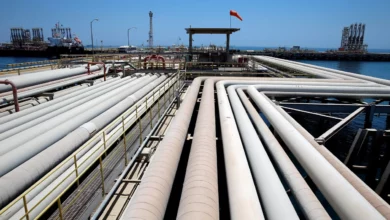
Crude futures rose one percent on Thursday after a report suggested that Saudi Arabia would propose a deal to balance oil markets, signalling the OPEC kingpin was willing to compromise after a rout that has more than halved prices since June 2014.
Saudi Arabia, which has so far resisted any intervention to prop up oil prices, will propose the Organization of the Petroleum Exporting Countries (OPEC) cut output by 1 million barrels per day (bpd) next year, Energy Intelligence reported, citing a senior OPEC delegate.
U.S. crude CLc1 was trading 42 cents higher at $40.36 per barrel at 0742 GMT, while internationally traded Brent futures LCOc1 were up 58 cents at $43.07.
Traders, however, were cautious about the proposal, saying it would be challenging for OPEC and other major producers such as Russia to agree on who should cut, or limit, production.
"By allowing output to fall they would push up prices, which would result in higher production in North America, and a loss of market share," said Jonathan Barratt, chief investment officer at Sydney's Ayers Alliance. "All their rhetoric has been against that."
All eyes are on an OPEC ministerial meeting on Friday, but the group is widely expected to maintain its strategy of keeping output high in an attempt to defend market share.
"We expect the OPEC meeting on Thursday and Friday to be a non-event, and member countries are unlikely to agree on any production cuts," Barclays said. The brokerage cut its forecast for Brent and U.S. crude price by $3 to $60 and $56 per barrel.
Besides oversupply, oil prices are being pressured by a build-up in U.S. inventories and a strong dollar.
Both U.S. crude and Brent fell more than 4 percent on Wednesday, with Brent settling at a near 7-year low, after data from the U.S. Energy Information Administration showed a 10th straight weekly rise in U.S. crude inventories USOILC=ECI.
Additionally, oil product supplies are also building as warmer-than-usual weather in the U.S. northeast, a major market for heating oil, limits demand.
The U.S. inventory build is compounding oversupply concerns as output from the country's prolific shale fields remain strong. Global oil production already exceeds demand by between 0.5 million to 2 million bpd.
A strong U.S. dollar, lifted by the prospect of a Federal Reserve rate hike, has kept oil prices weak as it makes greenback-dominated contracts such as crude futures more expensive for those holding other currencies.




